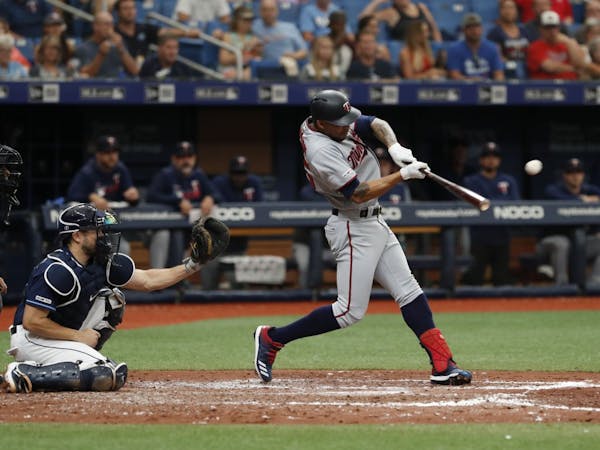Tyler Duffey was already 29 pitches into his day when it happened. The sellout crowd at Target Field was on its feet last Sunday and making a racket, anticipating a sixth strikeout from Duffey to end a 7-0 blowout of the White Sox, and Chicago shortstop Jose Rondon was waiting for a 3-2 pitch. Duffey got the sign, fastball down and away, and "I just tried to let it go," he said. "When there's 40,000 people screaming, my heart is really pumping."
He wound up, threw it as hard as he could, and Rondon fouled the pitch, a high strike, back into the crowd. Duffey didn't notice what flashed on the scoreboard above the Twins' bullpen: 97.
The 28-year-old righthander has thrown 4,987 pitches in the big leagues. This was the fastest one — by more than half a mile per hour — that he's ever thrown. Statcast called it 96.8 mph; his best had been 96.2.
"That's good to know. I'm not surprised. I can feel that I'm throwing harder," Duffey said. "I've made some adjustments. I've changed my fastball grip, and I'm getting behind the ball more."
In fact, Duffey may be the poster child for the Twins' new approach to pitching — in effect, the monster created by pitching coach Wes Johnson's Dr. Frankenstein. Duffey reached the major leagues as a curveball-reliant starter, a pitcher who, he says, was taught "that contact is good, that my goal was getting an out in three pitches or less." But that's not how baseball is played anymore.
"He can be a strikeout guy, and he's learned that," said Johnson, the Twins' new pitching coach who built a reputation for increasing his pupils' velocity while at Dallas Baptist, Mississippi State and Arkansas. "When we started back in spring training, our goal was to strike out more hitters than we ever have. We're getting there, incrementally. And Tyler is someone you're seeing make progress really fast."
No kidding. Duffey has struck out 22 batters in just 13 ⅔ innings, more than doubling last year's whiff rate. He has already struck out the side three times this season, and he's doing it with velocity: His average fastball has jumped from 93.4 to 94.3 mph.
"It's not just the fastball velocity. I'm getting a better carry, too," Duffey said, referring to the illusion of a rising fastball. While it doesn't actually rise, a fastball with "carry" doesn't drop as quickly as a hitter is accustomed to, causing him to swing underneath the pitch. "That's been a big thing for me. It's fun to see when you throw a fastball and the guy swings under it. That's pretty cool."
He did it by following Johnson and bullpen coach Jeremy Hefner's workout program, and by adjusting his fastball grip: Duffey now throws his four-seam fastball with his fingers close together, imitating his sinker grip, which he said the Twins' super-slo-mo cameras prove replicates the spin rate that keeps his pitches higher in the strike zone than hitters expect.
He's also pitching higher in the strike zone, pursuing strikeouts.
Duffey's transformation is only the most obvious improvement that Johnson has coaxed from the pitching staff. Of the nine current Twins pitchers who had significant MLB experience in 2018, seven have increased their fastball velocity, four of them by more than a mile per hour. And six have experienced healthy jumps in their strikeout percentage.
"I try to tell all our guys, there's always a next level. If we have that mind-set, continue to work and get a little bit better each day, the results will show it. Tyler Duffey can hit 97 and that's a start," Johnson said. "It may not always be the fastball, where the numbers pop out at you. It may be the best slider they've ever thrown. You see pitchers who are constantly looking at the radar gun, but that doesn't tell the whole story. We're trying to give them the tools to turn that velocity into strikes. And into outs."
Phil Miller covers the Twins for the Star Tribune. Twitter: @MillerStrib
E-mail: phil.miller@startribune.com
